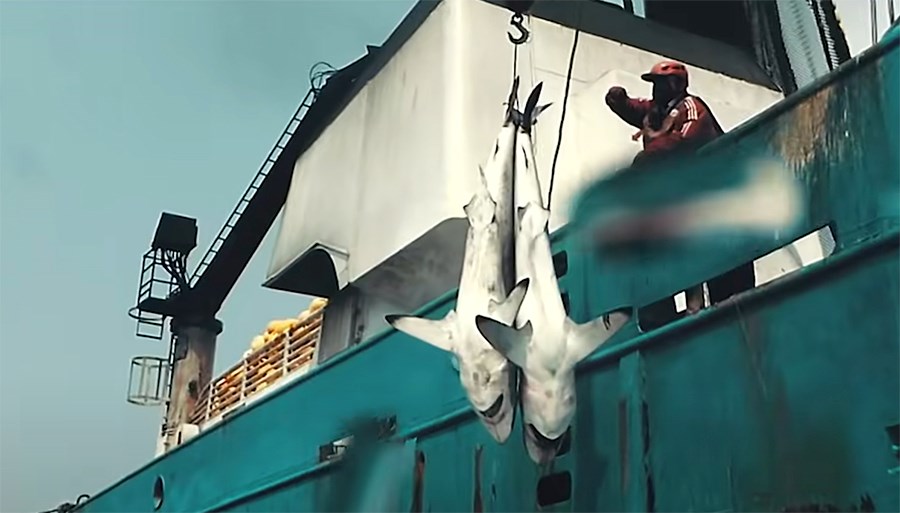There’s been a lot of talk about the new Netflix documentary, , where stories behind the industrial fishing industry are exposed. A few members of our community-supported fishery, Skipper Otto, have reached out to us to voice their concerns about the film, and we totally understand – our team was also disturbed by it! The truth is, the realities of the global industrial fishing operations depicted in this feature are sadly not at all surprising to us. The harsh truths of , , drift nets, and harmful government subsidies are all issues we’ve been talking about for decades.
I want to start off by saying that if the only seafood option available was a product of this devastating, global industrial system, then I would also stop eating seafood! But it’s really important to make the distinction between factory vessels in international waters and small-scale, in-shore fishing like what our . Lumping small-scale coastal fishing together with industrial-scale fishing would be like comparing horse-logging a woodlot to industrial deforestation.
The documentary shows some horrifying footage of bycatch being caught on a massive shrimp trawler, then being tossed overboard. On vessels like these, for every 1lb of shrimp harvested, 6lbs of bycatch are also caught. The filmmaker’s criticism for bottom trawling and “death nets” is totally valid – this is the reality on factory boats, designed to extract as much from our oceans as possible, exploiting people and the planet in the name of profits. But this isn’t the case with small-scale, regenerative fisheries where gear methods are extremely targeted, and as a result, bycatch levels are extremely low. To give you a sense, have a look at we wrote in 2015 about how little bycatch one of our fishers caught that season.
Another issue that gets brought to light is the plastic pollution created by lost fishing gear. We’ve seen other documentaries like Patagonia’s ‘Ghost Nets,’ and the impacts of this type of pollution are far-reaching and highly destructive. But it’s important to remember that these are once again issues created by massive-scale industrial fishing operations, not small-scale fishing families.
In industrial fishing, massive gear is often dragged along the seafloor or left anchored for days or weeks with the intention to return later to harvest whatever has become ensnared. By contrast, gillnets and trolling lines used in BC by our fishers are never left unattended, and are pulled back on board every 20 to 90 minutes. Fishing gear is a really big investment for fishing families, so losing a net can end a season.
In our namesake Otto’s 50 years fishing, he never lost a single net – it’s just not in a fisher’s interest, for environmental or financial reasons. Any time gear gets entangled or damaged, fishing comes to an immediate halt, someone grabs the gaff (a pole with a hook on the end), and everything is pulled aboard to be repaired later on shore. If you’ve ever come to False Creek Fishermen’s Wharf in Â鶹´«Ã½Ó³»during the fishing season, you may have seen fishers spending hours meticulously repairing their expensive nets and traps so that they can be used season after season. And truth be told, small-scale fishers pull in far more plastic and trash from the oceans each day when they are out at sea than they will ever leave behind.
All this to say, the biggest truths exposed in Seaspiracy are that the global seafood system is dirty, and there is a serious lack of transparency. It’s extremely difficult to know exactly what you’re supporting when you buy fish with a murky history – let alone trust that you're actually that the label claims it to be.
We think knowing your fisherman, knowing the gear methods they employed to bring you their catch, and even where and when they caught it, are all details you have the right to know when deciding if you want seafood to be part of your diet. In cases where these details are absent, we would question buying it. This is why we stand for total transparency behind the seafood our fishing families catch for you.
And if Seaspiracy can help expose the massive corruption, social injustice, and environmental destruction in the global seafood industry, then that’s a good thing.
Celine Terfloth is Communications Manager at Skipper Otto Community Supported Fishery in Vancouver



